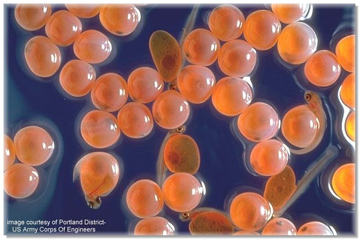281113-fish_eggs.jpg

Eggs used in the production of fish. Credit: US Army Corps of Engineers.
As the oceans grow warmer, some species of fish change addresses. They leave waters that have grown too warm, or expand their range into waters that had been too cool for them. One way to follow these migrations is to toss a net in the water and see what species you come up with. Another is to count not the fish, but their eggs.
In theory, that’s easy enough — scoop up some eggs that are floating at the surface and sort them by species. In practice, though, unscrambling a mass of fish eggs is hard work. Most eggs are no bigger than the head of a pin, and the eggs of many species look pretty much alike. Even an expert can make mistakes. And even when they get it right, it’s a tedious and labor-intensive process.
So researchers at the Scripps Institution of Oceanography in California are developing a way to automate the process. In essence, they read the genetic “barcode” of each egg, providing an exact identification.
The technique uses microscopic beads coated in chemicals that act as genetic “probes” for individual species. The probes correctly identified 23 different species, at a fraction of the time and cost of other techniques.
A quick and reliable way of identifying eggs could help the fishing industry follow commercial fish as they move or expand to different waters. And it could help marine biologists keep tabs on the health of different species by monitoring when and where they spawn and how spawning is affected by changes in the environment — important insights gained by counting fish eggs.

